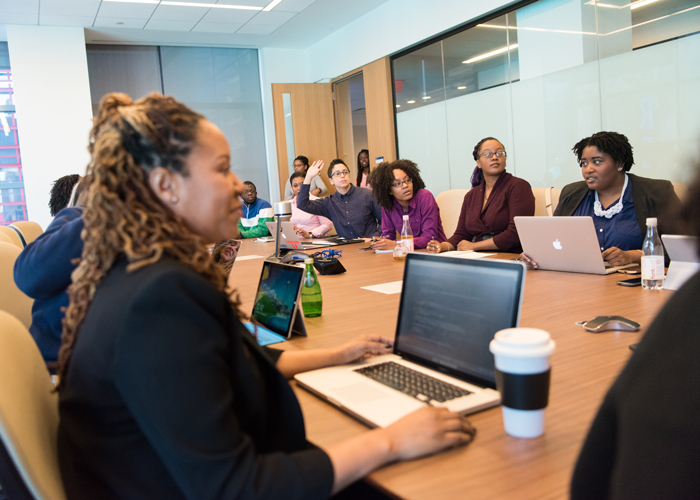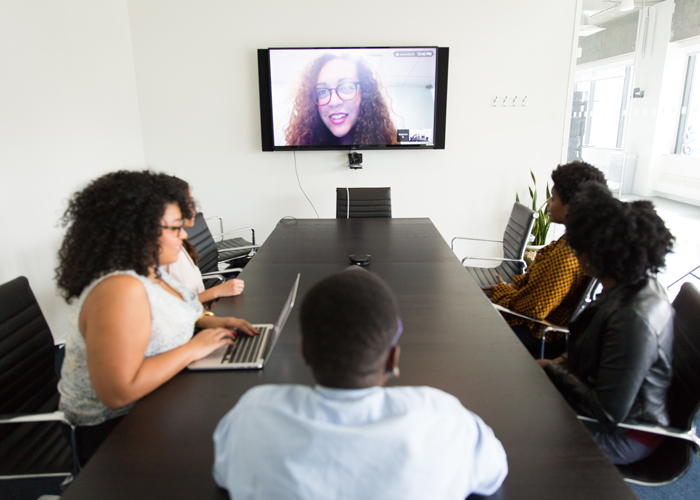Open Office: MANAGING A BLENDED WORKFORCE
Recent years have seen a rise in popularity of the blended workforce, as employers have increasingly enjoyed the flexibility of hiring a diverse range of staff on full and part time contracts, temporary workers, contractors and freelancers, often working from multiple locations and different time zones.

The enthusiasm for blended working is shared by employees too. Today’s workforce demands more flexible working, greater work-life balance, less commuting during rush hour and more quality time with family and friends. They don’t expect a job for life and will switch jobs to find organisations that match their needs.
COVID-19 has accelerated this thinking. The World Economic Forum found 98% of staff wanting the option to work remotely. Organisations not offering blended working in future are likely to miss out on large pools of talent, as many staff now value working flexibly more highly than they value a bonus.
Managing a blended workforce requires different thinking. Managers and HR must review how they recruit, develop and motivate to get the best from their people. Careful consideration of the policies, procedures and processes is needed to optimise productivity whilst creating an inclusive workplace culture.
Create human connection
We all require a deeper level of connection than is possible through transactional communications alone. As Brene Brown puts it, “We are hardwired for connections, curiosity and engagement.”

When working from a co-located office we spend 8% of our time ‘socialising’: forming the connections that allow successful collaborations and creative problem solving to flourish. Such opportunities are missed when we don’t work together in the same place at the same time. Instead, managers and HR must make conscious efforts to recreate these opportunities.
Lead by example to avoid communications becoming superficial. What can you do to generate a feeling of camaraderie? How can projects be organised so that people have adequate opportunity to bounce ideas off each other? Look for different ways to connect. How could you foster a greater sense of community? How can you build opportunities for people to interact?
Managing a blended workforce requires an element of over-communication. You will need to create the time and space for better quality conversations.
Create positive energy
Our energy is enhanced through uplifting, invigorating and rejuvenating relationships: it’s called relational energy and it helps create positive and productive working environments.

Team performance generally matches the energy within the team. Where there’s negative energy, teams perform significantly worse than those with positive energy. How mentally engaged your staff are at work, how enthused they are about their jobs and how willing they are to make extra effort, is largely determined by the type of energy generated when everyone works together.
If positive energy is transmitted when we’re in contact with each other, managing a blended workforce will require processes and time for people to ‘get relational’. To communicate and connect, not just because it’s a good thing, but because it will create positive energy, regardless of where people work from or when they work.
The most impactful way to connect and generate relational energy is face-to-face. But when that’s not possible, blended workforces should embrace video conferencing. Just make sure you use it in ways that capture and enhance the collective energy rather than drain it! It’s not quite the same as being in the room together but it can still be energy-boosting rather than energy-draining.
Create a positive performance culture
Regular check-ins with your staff are a quick win. Whether 30-minutes every day, 45-minutes a week or an hour or so every month, it’s important to schedule them into your diary. Make a regular commitment whether you see people face-to-face regularly or not.

Try these three steps from Savvy Performance Management:
Establish clear expectations: A clear understanding of what everyone is expected to accomplish is critical to motivation and satisfactory performance. Put yourself in each persons’ shoes and ask:
- What am I supposed to do?
- How am I supposed to do it?
- How will I know when it’s done correctly?
- How do I get the resources I need?
- How do I prioritize my activities?
- How will I get feedback?
Establish a routine: Set up weekly or monthly team meetings to keep abreast of progress.

Face-to-face meetings with the whole team once or twice a year are also beneficial. They facilitate teambuilding and trust in a way not quite achievable when workers are disbursed. Wherever possible invest the time and resources to make this happen; the improved productivity will easily repay your investment. If logistically that doesn’t work, do it via videoconferencing instead. It’s not quite the same but it’s an adequate substitute when circumstances dictate.
Evaluate progress against goals and expectations: All staff need a one-to-one with their manager at least every 6 weeks to review progress and receive feedback and support. Do these on days when you’re both in the office if you can although video or phone calls can also work. This doesn’t need to be onerous. Make it part of your regular performance management process and never postpone or cancel unless absolutely unavoidable.
By establishing clear expectations, creating a performance management routine and regularly evaluating progress against goals, you can be confident that performance is being managed effectively, issues are picked up early and all staff are supported to do a great job.
Blended workforces are the future
Although it may well be more challenging to manage, allowing your workforce to work varying hours, times, or locations brings mutual benefit.

According to the CIPD (Chartered Institute of Personnel and Development), such flexibility helps more people access the labour market, stay in work, manage caring responsibilities and achieve a better work-life balance. It can also support enhanced employee engagement and wellbeing. Other important benefits include increased loyalty and commitment, higher job satisfaction, increased engagement, reduced absenteeism, better mental health, and improvements in performance, motivation and productivity.
The future of the workforce is blended. And it is already here. Are you ready?




